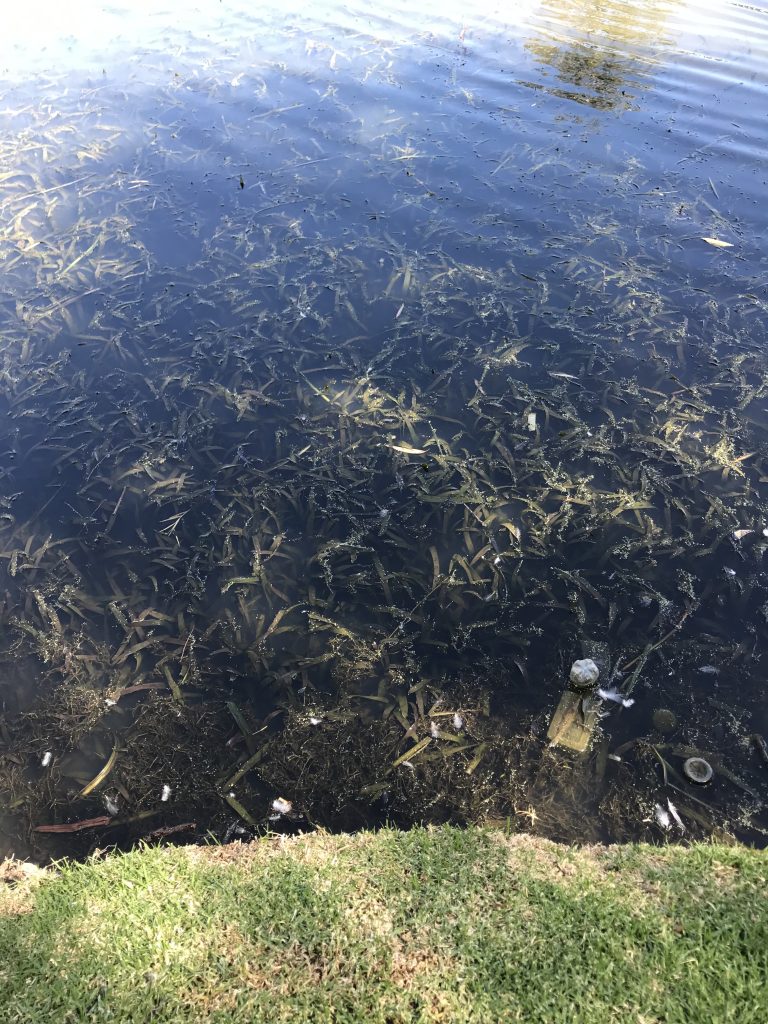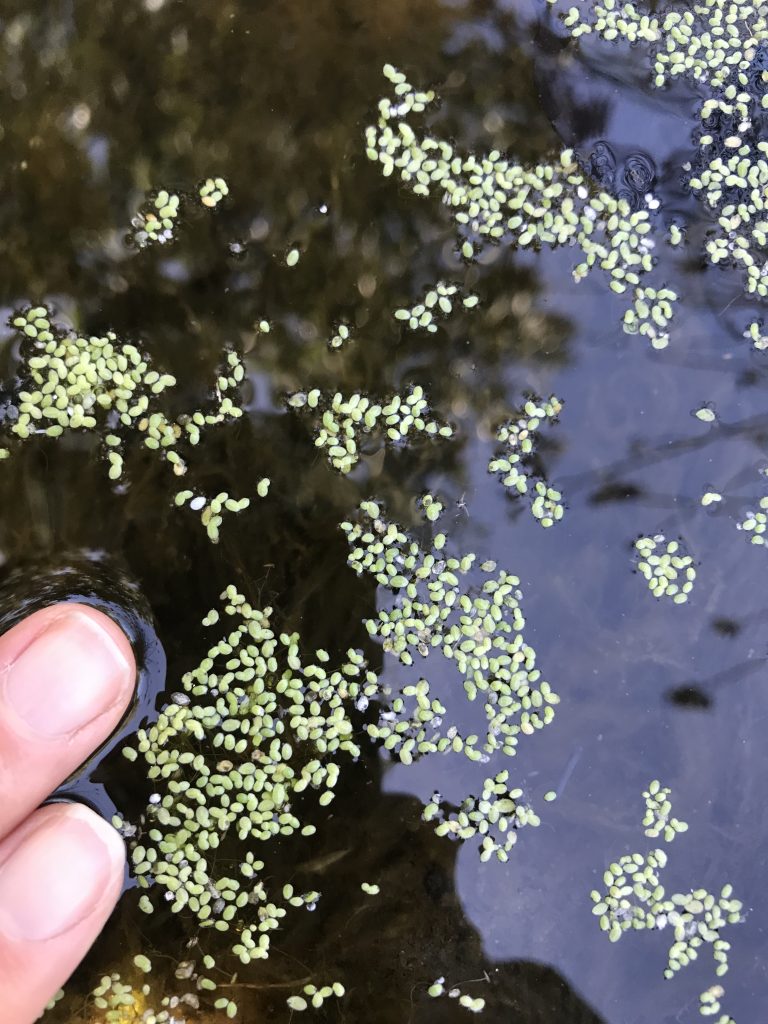Torrens Lake green and growing? NGT surveys aquatic vegetation in Adelaide city
If you have passed through the city of Adelaide in recent months, you many have noticed the River Torrens looking a little green. No, it’s not blue-green algae, it’s actually duckweed (Lemna sp.)! It’s not necessarily a bad thing at all, though some users of the river may not welcome its presence.

Back in 2020, NGT’s Ben Taylor and Tessa Roberts spent several days walking and boating around the Torrens Lake/Karrawirra Pari in Adelaide’s CBD, surveying the aquatic, emergent and riparian vegetation. Under the water, we didn’t find too much living green vegetation at all.
The ‘lake’ portion of the Torrens River was created with the construction of the weir in 1881, and the area of interest stretches between Hackney Road and the weir (near the North Adelaide Par 3 golf kiosk). Once a wild and variable river of large floods to dry beds, it is now a highly controlled system. Today water levels are carefully managed and almost completely stable and surrounding vegetation has changed to a parkland setting. The river has faced challenges including high nutrient levels, siltation, and introduced carp, to name a few.
Working with the City of Adelaide council, NGT resurveyed this section of the Torrens recently in February and March. Tessa and new team member Simeon Pocha headed out on the boat to record the changes in aquatic vegetation since our last survey, prompted by the sudden growth of native duckweed on the river. Though our report is still in progress, so far we have found a lot more life under the water. Two species (Vallisnaeria australis and Potamogeton crispus) have markedly increased since the previous survey, which is great news for the health of the river! As for the duckweed, it can grow rapidly in slow moving water with high nutrients, but is a good food source for animals and water-birds, and may also help to remove some nutrients from the water. It’s so far shaping up to be a good news story!

A thriving patch of submerged aquatic vegetation (Vallisneria australis) in the Torrens/Karrawirra Pari Lake, complete with some city rubbish too. 
The tiny individual duckweed plants, some of the smallest flowering plants in the world.
